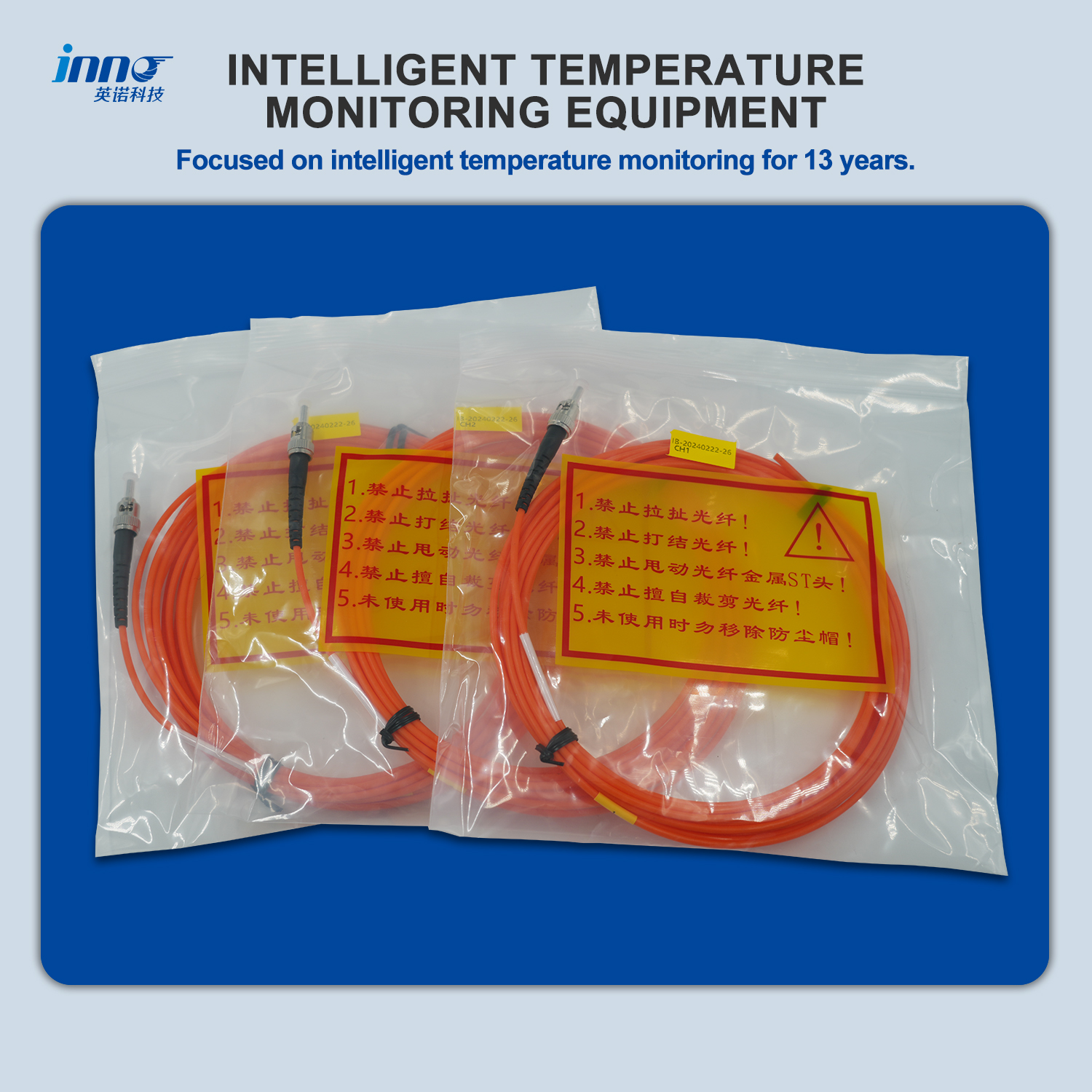 The main principle of FJINNO’s independently developed fluorescent fiber optic temperature measurement module is the integrated fiber optic temperature measurement system that utilizes the principle of fluorescent fiber optic temperature measurement. The temperature measurement module performs industrial temperature measurement in extremely special temperature measurement environments such as high voltage and strong electromagnetic interference in substation equipment, which traditional PT100 thermocouples cannot achieve. The fiber optic temperature measurement method has unique technical advantages.
The main principle of FJINNO’s independently developed fluorescent fiber optic temperature measurement module is the integrated fiber optic temperature measurement system that utilizes the principle of fluorescent fiber optic temperature measurement. The temperature measurement module performs industrial temperature measurement in extremely special temperature measurement environments such as high voltage and strong electromagnetic interference in substation equipment, which traditional PT100 thermocouples cannot achieve. The fiber optic temperature measurement method has unique technical advantages.
The fluorescence fiber optic temperature measurement optical system is a good application in the field of fiber optic sensing. The fluorescence Sistem pengukuran suhu serat optik includes: an excitation light source, optical fiber, and photoelectric detection elements; The fiber optic temperature measurement module also includes: fluorescence transmission fiber, fluorescence fiber optic temperature measurement probe, and fiber optic coupler.
The application scope of fluorescent fiber optic temperature measurement host is particularly evident in the field of power, widely used in temperature monitoring of comprehensive power equipment such as oil immersed transformer temperature measurement, dry-type transformer temperature measurement, switchgear temperature measurement, reactor side ear temperature measurement, generator stator temperature measurement, high-voltage cable joint temperature measurement, high-voltage bus joint optical fiber temperature measurement, knife switch temperature measurement, dll. in substations, fully meeting the precise temperature measurement of point type. Fiber optic sensor monitoring and fiber optic signal transmission will not cause dangerous operations such as conductivity. Fiber optic has excellent insulation performance, does not cause lightning, is insulated, and is resistant to interference and high voltage.
Si fluorescent fiber optic temperature measurement system adopts the latest generation of self-developed fluorescent fiber optic temperature measurement module and fluorescent temperature measurement probe, which has the advantages of intrinsic safety, strong electromagnetic interference resistance, good electrical insulation, proteksi petir, Akurasi tinggi, stable temperature measurement performance, Umur panjang, ketahanan korosi, and small volume. The model processing part adopts advanced digital demodulation technology, which has real-time online temperature signal acquisition, processing, and uploading functions. The temperature information of the tested object is fully realized through optical signals from sensing, demodulation to transmission, fully realizing non electric detection and intrinsic safety. It has a wide range of application fields and has abundant customer cases in various industrial environments and laboratory fields such as power generation, power transmission, Aerospace, industrial microwave, Medis, food processing, petrochemical, plastic rubber industry, microwave chemistry, dll.
The fluorescence fiber temperature measurement system does not require calibration during its lifespan and is particularly suitable for real-time temperature monitoring in special industrial environments such as high voltage and strong electromagnetic (EMI/RFI/EMP). Pada waktu bersamaan, the design of the fluorescent fiber optic temperature measurement module is flexible and reliable, and can complete multi-point temperature monitoring with complex topological structures, with strong environmental adaptability.
Introduction to the Principle of Fluorescent Fiber Temperature Measurement
The fluorescence fiber temperature module consists of a fluorescence fiber demodulator and a fiber optic temperature probe. The fiber optic probe is composed of a fiber optic and a fluorescent object installed on top of it. Fluorescent substances emit fluorescence energy when stimulated by light of a certain wavelength (stimulated spectrum). After the incentive is revoked, the persistence of fluorescence afterglow depends on factors such as the characteristics of the fluorescent substance and environmental temperature. This excited fluorescence typically decays exponentially, and we refer to the decay time constant as fluorescence lifetime or fluorescence afterglow time. FJINNO found through experiments that the attenuation of fluorescence afterglow varies under different environmental temperatures. Jadi, by measuring the length of the fluorescence afterglow lifetime and processing it through the fiber optic demodulation section, the ambient temperature at that time can be determined.
Sensor suhu serat optik, Sistem pemantauan cerdas, Produsen serat optik terdistribusi di Cina
 |
 |
 |
 Sensor suhu serat optik INNO ,sistem pemantauan suhu.
Sensor suhu serat optik INNO ,sistem pemantauan suhu.
